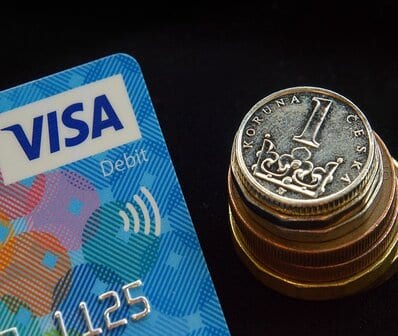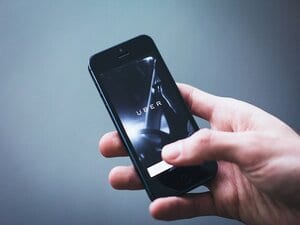
The American company Uber, known for its mobile application by the same name for searching, calling and paying for personal drivers, reported the launch of a Visa credit card in its homeland under its own brand with an free annual service, which it claims was specially developed for its passengers.
At the Money2020 conference in Las Vegas, the company announced a partnership with Barclays and Visa, as a result of this collaboration, Uber will start issuing its own credit cards.
As noted by Uber, before the card was introduced, the company polled its customers to find out what is important to them when selecting a credit card, as well as where and how they spend their time. Based on the poll results and the analysis done, the card was created.
Uber Visa Cardholders will be able to receive rewards for all their purchases, and these rewards are accumulated even faster for things like dinner in restaurants, booking an upcoming trip, a ride with Uber to work and even online shopping. Users can also exchange their rewards with Uber credits which in turn can be spent on Uber trips or UberEATS food delivery service. Moreover, the received rewards can be used for cashback or exchange for various gift cards.
You can now acquire the Uber Visa Card card since it’s launch on November 2, but for now, it is only available in the US. You have to apply through the Uber application or on the company’s website, the decision to issue the card will be made within a few minutes. Users will be able to immediately start paying with a card in Uber and UberEats applications, and the card itself will be delivered within about a week through the post office.
It is reported that the card will be unlimited. The credit rate will be 15. 99%, 21.74% or 24.74% and will be determined individually based on credit risk assessment.
What the card offers
Uber Card offers its holders a lot of bonuses. So, first of all, each card will have a starting amount of $ 100. After spending $500 on purchases during the first 90 days, the user will receive other bonuses, including cashback for purchases in restaurants and UberEATS (4%), purchase of airline tickets and hotel booking (3%), online purchases and travel via Uber (2% ) and other operations (1%).
In addition, the owners of the “plastic” from Uber will be able to ensure the smartphones in exchange for providing Uber with information about the mobile operator and the user’s transactions. Uber has promised its customers to never share their data with third parties.
Also, cardholders will be able to receive an additional $50 per year for the purchase of subscriptions in streaming services like Netflix (subject to purchases on the card for $5000 per year). In addition, partners offer smartphone insurance services for up to $600 in the event of theft or breakage. To do this, you must use a card to pay for cellular services.
The History of Uber. How It All Started

The Uber brand is known all over the world as a convenient online service for renting cars or providing taxi service, which can be used through a special application or website. In addition to this, the company also provides other services, for example, the delivery of products or other goods. At the end of 2016, the number of passengers in the monthly transportation through the service was 40 million. And the company’s value was estimated at $ 68 billion at the end of 2016.
The brand is owned by the U.S. company Uber Technologies Inc. It was founded in 2009 and was originally called UberCab. The name Uber refers to the German über – “over”, which is also used in English in the meaning super or excellent. The company’s founders are Garrett Camp and Travis Kalanick. In 2011 they announced the official launch of a full-featured mobile application called Uber, and at the same time, the company changed its name too.
The history of Uber began on a winter night in Paris in 2008, when two businessmen, Garrett Camp and Travis Kalanik, were discussing the ideas of a joint business while waiting for the taxi to arrive. At that time Camp sold his startup StumbleUpon to eBay, and Kalanik was in search after a series of failed projects. According to the original idea, the costs for drivers, cars, parking, garage fell on Camp and Kalanik. By March 2009, Camp developed a prototype application. The Uber service, which began operating in San Francisco, is now available in 528 cities around the world. It is a sample of the so-called economy of joint participation, where resources, in this case, road transportation means are used jointly.




